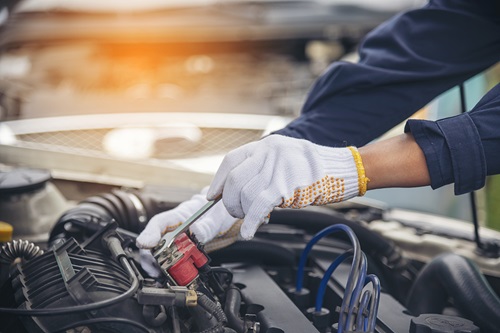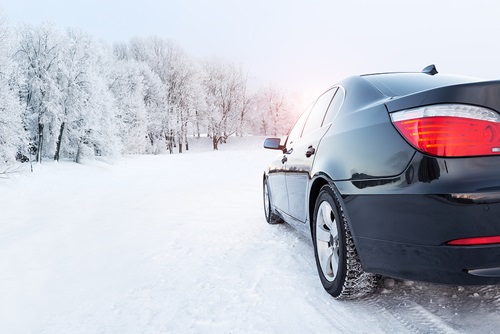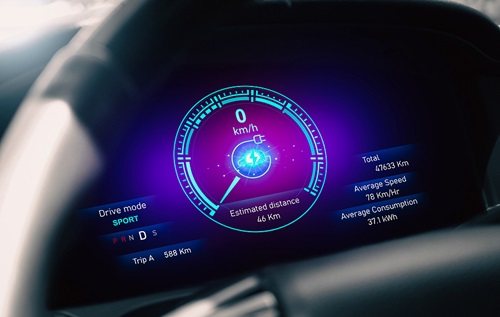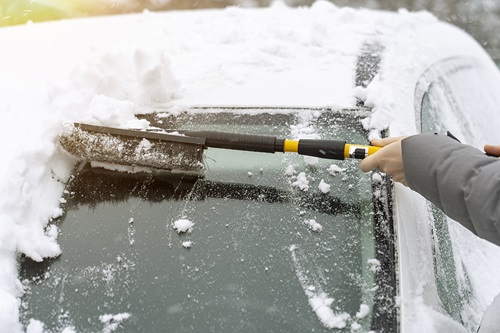There’s no point in saying, in a Sean Bean impression, that ‘winter is coming’ because it’s already here. Have you looked outside the window lately?
That being the case, it’s time to make sure that your car is well and truly winter-ready, whether it be rain or snow and ice that the weather gods are preparing to throw at us. Read on as we discuss how to prepare your car for winter driving.
Service

The first thing to think of is a service. If your car is due a service in the coming months, there’s no harm at all in getting it done early and asking your dealer, garage, or mechanic to give it a thorough winter check-up. If you're interested, read our post on what is checked in a car service to learn more.
Visibility
Our Irish winters are long, wet, and dark so start by making sure that your lights are all working correctly, and replace — or maybe even upgrade — any bulbs as you go. Replace your windscreen wipers with fresh blades (you’d be amazed how quickly they wear out) and make sure that your windscreen washers are all working properly and are aiming at the right parts of your screen. It’s a good idea to top up with a higher concentration of screen wash to water, as that keeps away any freezing in the pipes. Make sure that your car’s heating and air conditioning are working properly, and check that the rear demister is working. It’s a good idea to stash an ice scraper and some de-icer spray in the car, just in case.
Next — tyres.

We’re sorry-not-sorry to keep banging on about this, but your tyres really are the most important safety aspect of your car, and in winter especially so. You need to make sure that your tread depth is deep enough for winter, and we’d recommend replacing tyres that have run down to under 3mm as winter approaches as you’ll need the extra depth to ward of aquaplaning, especially under braking. It’s definitely a good idea — especially if you have rear-wheel drive car — to fit some winter tyres. Once the average temperature is below 10-degrees celsius, normal ‘summer’ tyres start to harden up and can’t offer the same grip levels as a set of winters. They’re a pricey purchase — not least because you need a spare set of wheels too, and somewhere to store the ones you’re not using — but the cost balances out a little as you’re wearing two sets of tyres over a year, not just one so your replacement window stretches a bit. If we get some snow and ice, you’d be utterly amazed how much of a difference winter tyres make. It’s no lie to say that a front or rear-wheel drive car on winter tyres will get going more easily, and crucially will stop better, than any four-wheel drive car on summer tyres.
Fluids
Make sure that all of your fluids — brake, power steering, and especially coolant and anti-freeze — are all topped up and ready for any cold snaps, and it’s a good idea to stick some fresh brake pads on and check your discs (and drums too, depending on the car) to make sure they’re in good nick.
What about EV's

If you’re driving an electric car, then you’ll have to expect a drop in range as the temperatures head south, but this can be alleviated. If you’ve bought a Hyundai or Kia EV then well done — in studies in Norway these have been shown to be the best-performing electric models in cold temperatures. To help keep your range at its maximum possible, make sure you’ve downloaded the app to control your car’s charging, and use it to heat up your car’s cabin as it charges, whether that’s overnight, outside work, or both. It means that you’ll come out to a warm, defrosted car and you haven’t had to waste precious battery charge to heat everything up. It makes an enormous difference.
Incidentally, if we do get a sudden snowstorm and you find yourself in an endless tailback in an electric car, don’t worry — you can keep the heat on as studies have found that most EVs will only draw around 1kWh per hour on average, which means it could literally be days before you run out of juice.
Other considerations

Speaking of getting stuck, it’s never a bad idea to stash in the boot a small bag with a warm coat, a blanket, a torch, some water, a backup battery for your phone, and maybe some chocolate. It’s highly unlikely — hopefully — that you’ll get badly stuck by a flood or snowstorm, but you’ll be thankful you prepared if the worst does happen. A shovel and a strong tow-rope wouldn’t go amiss either.
If we do get snow, and you happen to own a large four-wheel drive SUV, don’t get too smug, Your all-wheel traction will help you get going while others get stuck, it’s true, but your car’s weight and high centre of gravity will be major disadvantages when it comes to steering and braking. You’ll need to tread as carefully as the rest of us, so slow down.
Don’t be tempted to fit snow chains – they’re illegal under the Road Traffic Act and do make sure you clear any standing snow off your car before you set off. Snow left on your roof will fall off, potentially blinding those behind you while snow on your own bonnet will just slide back, potentially blinding you. It only take five minutes to clear a car, and you can do it with good gloves, and perhaps a soft brush for the roof.
Safety first
If you do get stuck, don’t try and leave the car and walk for help – you’re more likely to fall down on a slippery surface and hurt yourself. Stay with the car, call for help and break out the chocolate. There’s one final potential option for winter-prepping, and that’s actually having a spare car. If your daily driver is something low-slung, or in any way precious, then it’s actually not a bad idea to have a ‘winter beater’ — assuming you can afford it. We found, for sale from an independent dealer, a 2015 Skoda Octavia Scout 4x4 for €16,950 which is roomy, reliable, has impressive traction and rough-road ability, and with a set of winter tyres on it should prove to be utterly unstoppable. Not the cheapest option for winter prep, but it might just be the best…
